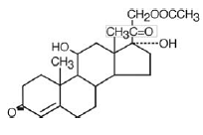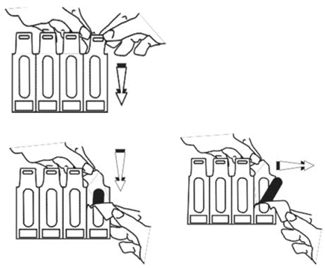Anusol Rectal
- Generic Name: hydrocortisone acetate rectal suppositories
- Brand Name: Anusol Rectal
side effects drug center anusol rectal (hydrocortisone acetate rectal suppositories) drug
Drug Description
What is Anusol Rectal and how is it used?
Anusol Rectal is a prescription medicine used to treat the symptoms of Ulcerative Proctitis. Anusol Rectal may be used alone or with other medications.
Anusol Rectal belongs to a class of drugs called Corticosteroids, Gastorintestinal.
It is not known if Anusol Rectal is safe and effective in children.
What are the possible side effects of Anusol Rectal?
Anusol Rectal may cause serious side effects including:
- shortness of breath,
- swelling of your ankles or feet,
- muscle weakness,
- rapid weight gain (especially in your face and midsection),
- severe rectal pain or burning,
- bleeding from your rectum,
- severe stomach pain,
- sudden and severe headache,
- pain behind your eyes, and
- seizure
Get medical help right away, if you have any of the symptoms listed above.
The most common side effects of Anusol Rectal include:
- mild rectal pain or burning,
- acne,
- changes in your menstrual periods,
- increased sweating, and
- increased facial or body hair growth
Tell the doctor if you have any side effect that bothers you or that does not go away.
These are not all the possible side effects of Anusol Rectal. For more information, ask your doctor or pharmacist.
Call your doctor for medical advice about side effects. You may report side effects to FDA at 1-800-FDA-1088.
DESCRIPTION
Each Anusol-HC® 25-mg Suppository contains 25 mg hydrocortisone acetate in a hydrogenated vegetable oil base. Hydrocortisone acetate is a corticosteroid. Chemically, hydrocortisone acetate is pregn-4-ene-3, 20-dione, 21-(acetyloxy)-11, 17-dihydroxy (11ß)- with the following structural formula:
 |
Indications & Dosage
INDICATIONS
For use in inflamed hemorrhoids, post-irradiation (factitial) proctitis, as an adjunct in the treatment of chronic ulcerative colitis, cryptitis, other inflammatory conditions of the anorectum, and pruritis ani.
DOSAGE AND ADMINISTRATION
Usual Dosage
One suppository in the rectum morning and night for two weeks, in nonspecific proctitis. In more severe cases, one suppository three times daily; or two suppositories twice daily. In factitial proctitis, recommended therapy is six to eight weeks or less, according to response.
HOW SUPPLIED
Anusol-HC® 25-mg Suppositories are white, cylinder shaped, with one end tapered. Package of 12 suppositories (NDC 65649-411-12) and package of 24 suppositories (NDC 65649-411-24).
Store at 20°–25°C (68°–77°F). See USP controlled room temperature. Store away from heat. Protect from freezing.
Opening Instructions
 |
Avoid excessive handling of the suppository. It is designed to melt at body temperature.
- Separate plastic film at top opening and pull downward.
- Continue pulling downward to almost the full length of the suppository.
- Gently remove the suppository from the film pocket.
Manufactured for: Salix Pharmaceuticals, Inc., Raleigh, NC 27615. October 2011
Side Effects & Drug Interactions
SIDE EFFECTS
The following local adverse reactions have been reported with corticosteroid suppositories.
- Burning
- Itching
- Irritation
- Dryness
- Folliculitis
- Hypopigmentation
- Allergic contact dermatitis
- Secondary infection
Drug Abuse And Dependence
Drug abuse and dependence has not been reported in patients treated with Anusol-HC® suppositories.
DRUG INTERACTIONS
No information provided.
Warnings & Precautions
WARNINGS
No information provided.
PRECAUTIONS
Do not use unless adequate proctologic examination is made.
If irritation develops, the product should be discontinued and appropriate therapy instituted.
In the presence of an infection, the use of an appropriate antifungal or antibacterial agent should be instituted. If a favorable response does not occur promptly, the corticosteroid should be discontinued until the infection has been adequately controlled.
No long-term studies in animals have been performed to evaluate the carcinogenic potential of corticosteroid suppositories.
Pregnancy Category C
In laboratory animals, topical steroids have been associated with an increase in the incidence of fetal abnormalities when gestating females have been exposed to rather low dosage levels. There are no adequate and well-controlled studies in pregnant women. Anusol-HC® suppositories should only be used during pregnancy if the potential benefit justifies the risk to the fetus. Drugs of this class should not be used extensively on pregnant patients, in large amounts, or for prolonged periods of time.
It is not known whether this drug is excreted in human milk, and because many drugs are excreted in human milk and because of the potential for serious adverse reactions in nursing infants from Anusol-HC® suppositories, a decision should be made whether to discontinue nursing or to discontinue the drug, taking into account the importance of the drug to the mother.
Overdosage & Contraindications
OVERDOSE
If signs and symptoms of systemic overdosage occur, discontinue use.
CONTRAINDICATIONS
Anusol-HC® suppositories are contraindicated in those patients with a history of hypersensitivity to any of the components.
Clinical Pharmacology
In normal subjects, about 26 percent of hydrocortisone acetate is absorbed when the hydrocortisone acetate suppository is applied to the rectum. Absorption of hydrocortisone acetate may vary across abraded or inflamed surfaces.
Topical steroids are primarily effective because of their antiinflammatory, anti-pruritic and vasoconstrictive action.
Medication Guide
PATIENT INFORMATION
Staining of fabric may occur with use of the suppository.
Precautionary measures are recommended.




